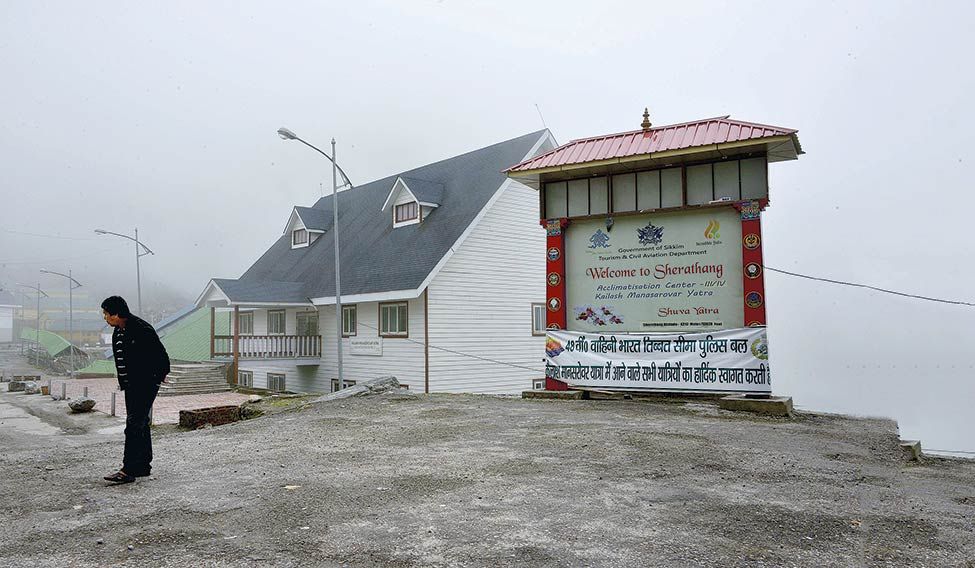
Regional rivalry between India and China destined to deepen
Several years ago, a retired Indian brigadier told me that India and China were bound to go to war. This war, as he described it, would not be fought over Arunachal Pradesh or any other disputed land. Instead, it will take place at sea in the coming years, and specifically in the Bay of Bengal, over increasingly precious natural resources.
It is a scary and sobering scenario—and perfectly plausible. Indeed, much ink has been spilled in recent years about the need for New Delhi and Beijing to secure sea-based energy and mineral reserves and other raw materials to meet the demands of their rapidly growing economies. As these resources become increasingly scarce, competition between India and China could be more cutthroat as they become the two prime participants in “the race for what’s left,” as natural resource expert Michael Klare described it.
And yet, amid all this talk about future sea-based conflict, it is easy to forget about the land-based territorial disputes festering in the here and now. The current standoff on a highly strategic plateau known as Doklam in India and Donglang in China—territory that Bhutan and India regard as Bhutanese and that China claims as its own—offers a not-so-friendly reminder about the clear and present danger of old-fashioned border disputes.
Such standoffs are not new, and they often subside as quickly as they flare up. What makes the current crisis so troubling is its timing. It has arisen at a moment when India-China relations have plummeted precipitously. To be sure, neither side has an interest in escalation. Still, defusing tensions this time around will require the most delicate of diplomacy.
It is hard to believe that two years ago, Indian Prime Minister Narendra Modi and Chinese President Xi Jinping sat happily together, beaming broadly, on a swing in Gujarat. It was the signature moment of a visit by Xi that was filled with warmth and goodwill.
In subsequent months, a slew of developments have caused relations to take a major plunge: China’s continued refusal to allow India’s entry into the Nuclear Suppliers Group and its obstruction of efforts at the United Nations to formally designate Jaish-e-Mohammad leader Masood Azhar as a terrorist; an April visit by the Dalai Lama to Arunachal Pradesh, which is claimed by Beijing; forward progress with the China-Pakistan Economic Corridor, which entails ample development in Gilgit-Baltistan, a part of Kashmir administered by Pakistan but claimed by India; and India’s refusal to send a representative to the Belt and Road Initiative summit in Beijing in May. This last move was probably particularly galling for China; nearly 60 countries—including several countries embroiled in territorial disputes with Beijing—sent senior officials to the event.
Do these tensions help answer the “why now” question about the current dispute? Quite possibly. Beijing and New Delhi have axes to grind these days, so China’s provocative decision to extend a border road and India’s bold determination to resist the move must be interpreted within the broader context of a very rocky period of bilateral relations.
Consequently, neither side will be eager to back down—and all the more so because of the strategic stakes at play. The standoff is taking place on territory that leads to the Chicken’s Neck— the narrow swath of prized real estate linking India’s northeastern periphery to the rest of the country. In effect, neither side wants to lose a game of chicken over the Chicken’s Neck.
Additionally, regional geopolitics gives both sides strong incentives to double down. India won’t want to jeopardise its close relationship with Bhutan, and particularly given New Delhi’s struggles to maintain friendships with its small South Asian neighbours (it fell into a tussle with Nepal in 2015). China, meanwhile, likely smells an opportunity to orchestrate this very outcome.
Still, with any luck, cooler heads will prevail. The last thing China or India needs now is the distraction—or, if it escalates into something greater, the disaster—of a border skirmish. Beijing is already dealing with the North Korea threat, while New Delhi is grappling with its hostile Pakistani neighbour.
Additionally, neither side wants to jeopardise a robust economic partnership. This commercial cooperation is not only bilateral—Beijing is New Delhi’s largest trading partner—but also increasingly multilateral. Witness how China and India are top shareholders in the Asian Infrastructure Investment Bank, and how they are both aspiring members in the Regional Comprehensive Economic Partnership, a trade bloc currently under negotiation.
There is ample potential for conciliation. Encouragingly, despite many days of angry rhetoric from both sides, Prime Minister Modi and President Xi had a brief but cordial conversation on the sidelines of the G20 meeting in Hamburg on July 7. An opportunity to make headway in easing the crisis will come on July 26 in Beijing, when Indian national security adviser Ajit Doval meets his Chinese counterpart at a BRICS summit.
This isn’t to downplay the very real and serious tensions between India and China, or to suggest that they won’t find themselves at loggerheads again in the near future. Indeed, the regional rivalry between the world’s two most populous nations is destined to deepen—and particularly, as that Indian brigadier suggested to me, some years down the road when increasingly scarce natural resources raise the stakes and increase the potential for conflict. The flashpoints could be at sea, but perhaps also on land. Arunachal Pradesh, for example, could become increasingly contested terrain—not just because of its strategic location and disputed status, but also because of its relative water abundance in an increasingly water-insecure region.
Coming back to today, the India-China relationship will need to muster the goodwill to weather the current Himalayan standoff. The incentives to do so are beyond compelling, because neither side can afford a war.
The author is deputy director with the Asia Programme, Woodrow Wilson International Center for Scholars, Washington, DC.
